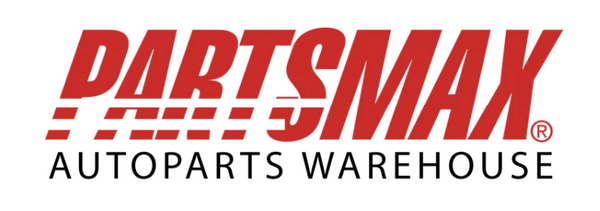Understanding your tire pressure is fundamental to vehicle safety, performance, and efficiency. Proper tire inflation affects everything from fuel economy to handling, making it one of vehicle maintenance's most critical yet often overlooked aspects. This comprehensive guide will help you master tire pressure management, ensuring optimal performance and safety for your vehicle.
The Science Behind Tire Pressure
Tire pressure, measured in pounds per square inch (PSI), represents air pressure that maintains your tire's shape and load-carrying capacity. The recommended pressure isn't just a random number – it's carefully calculated based on your vehicle's weight, design, and intended use. This pressure works harmoniously with the tire's construction to provide optimal contact with the road surface.
Why Proper Inflation Matters
Maintaining correct tire pressure impacts multiple aspects of your driving experience:
Handling and Braking Properly inflated tires maintain their designed shape, ensuring maximum contact with the road surface. This optimal contact patch directly affects your vehicle's handling characteristics and braking distance. Under-inflated tires can increase braking distance by several feet – a crucial difference in emergency situations.
Fuel Economy The Department of Energy reports that proper tire inflation can improve fuel efficiency by up to 3%. While this might seem modest, it translates to significant savings over time. Under-inflated tires create more rolling resistance, forcing your engine to work harder and consume more fuel.
Tire Wear and Longevity Incorrect tire pressure leads to uneven wear patterns. Under-inflation causes excessive wear on outer edges, while over-inflation concentrates wear in the center of the tread. Proper inflation can extend tire life by thousands of miles.
Finding the Right Pressure
Vehicle manufacturers specify recommended tire pressures based on extensive testing. These recommendations can be found in several locations:
Driver's door jamb placard Owner's manual Fuel door (on some vehicles) Glove box documentation
Note that the pressure printed on the tire sidewall is the maximum pressure the tire can handle, not the recommended pressure for your vehicle.
Temperature Effects on Tire Pressure
Tire pressure fluctuates with temperature changes. For every 10-degree Fahrenheit change in ambient temperature, tire pressure changes by about 1 PSI. This means:
- Morning readings will be lower
- Pressure increases during driving
- Seasonal adjustments may be necessary
- Regular monitoring becomes more important
Professional Tips for Pressure Checking
Timing is crucial when checking tire pressure:
- Check pressure when tires are "cold" (vehicle hasn't been driven for 3+ hours)
- Measure all four tires, including the spare
- Use a quality digital pressure gauge
- Check monthly and before long trips
- Account for heavy loads and towing
Digital vs. Analog Gauges
Modern digital gauges offer several advantages:
- More accurate readings
- Easier to read in low light
- Often include backlit displays
- Some feature multiple pressure units
- Generally more consistent readings

The Role of TPMS
Tire Pressure Monitoring Systems (TPMS) became mandatory in all new vehicles after 2007. While helpful, they have limitations:
- Only warn after significant pressure loss
- It may not be as accurate as direct measurement
- Require periodic sensor maintenance
- Should not replace regular manual checks
- It may need recalibration after rotation
Frequently Asked Questions
How often should I check my tire pressure?
Check your tire pressure at least once a month before any long trips. More frequent checks may be necessary during extreme temperature changes.
Should I inflate to the maximum pressure listed on the tire?
No, always use the pressure recommended by your vehicle manufacturer, typically found on the driver's door jamb or in the owner's manual.
Do I need to adjust the pressure in different seasons?
Yes, significant temperature changes between seasons can affect tire pressure. Check more frequently during seasonal transitions.
What's the impact of under-inflation on fuel economy?
Under-inflated tires can reduce fuel economy by up to 3%. For every 1 PSI drop in pressure, you lose about 0.2% in fuel efficiency.
How does load affect tire pressure?
Heavier loads require higher tire pressures. Consult your vehicle's manual for load-specific pressure recommendations.
Safety Considerations
Proper tire pressure significantly impacts safety:
- Reduced risk of blowouts
- Better handling in emergency maneuvers
- Improved wet-weather traction
- More predictable behavior in corners
- Enhanced stability during highway driving
Economic Benefits
Maintaining proper tire pressure offers several financial advantages:
- Reduced fuel consumption
- Extended tire life
- Fewer premature replacements
- Lower risk of road incidents
- Improved resale value
Environmental Impact
Correct tire pressure contributes to environmental conservation:
- Reduced fuel consumption means lower emissions
- Proper wear patterns extend tire life
- Fewer tires in landfills
- Lower raw material consumption
- Reduced overall carbon footprint
Advanced Considerations
Special situations require additional attention:
- High-performance driving Heavy cargo hauling
- Trailer towing
- Off-road activities
- Track day events
Seasonal Considerations
Different seasons present unique challenges:
Winter: Lower temperatures reduce pressure
Summer: Higher temperatures increase the pressure
Spring/Fall: Frequent temperature changes
Wet conditions: Proper pressure is crucial for hydroplaning resistance
Long-term Maintenance Strategy
Develop a routine for optimal tire maintenance:
- Regular pressure checks Rotation schedule
- Alignment checks
- Tread depth monitoring
- Visual inspections
Modern Technology and Tire Pressure
New developments in tire technology:
- Self-sealing tires Run-flat capabilities
- Bluetooth-enabled pressure sensors
- Smartphone integration
- Advanced TPMS systems
Conclusion
Understanding your tire pressure remains one of the most crucial aspects of vehicle maintenance. Proper inflation ensures safety, optimal performance, and maximum fuel economy. Maintaining correct tire pressure protects your investment while ensuring the best possible driving experience.
While PartsMax does not offer tire services, we are committed to helping you maintain your vehicle's optimal performance.
Visit our Miami warehouse at 3401 NW 73rd ST, Miami, FL 33147, or explore our online inventory for quality aftermarket parts that complement your vehicle maintenance routine. Contact us at (305) 691-1313 to learn about our selection of performance parts and accessories to help you achieve the best driving experience.

